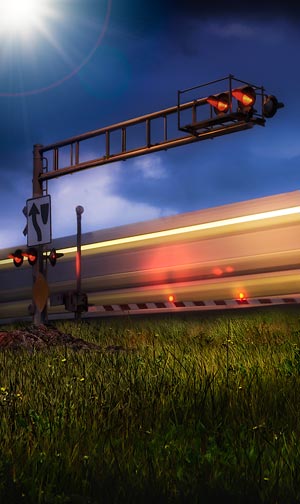Railroads, Manufacturers Balk at Safety Retrofit of Dangerous, Common Tank Car
(Chicago, Illinois – September 12, 2012)
A railroad tank car, one of the most commonly utilized in the rapidly-expanding rail transport of a product being increasingly used as a gasoline additive, as well as a model which has been involved in several high-profile, sometimes fatal, derailments in the recent past, is under fire from various safety agencies and groups, especially the National Transportation Safety Board, due to serious design flaws which have contributed to the volatility of these train wrecks.
The tank car, known as the DOT-111, has been in use long before it became the workhorse of ethanol transit, and its vulnerability has been brought out in several different studies of its past performance as a transport vehicle of hazardous liquids.
The DOT-111 itself has not been a causal factor in derailments, but rather, the design flaws have resulted in predictable problems once the tank car leaves the rails. A Norfolk Southern derailment in Columbus, OH on July 11 of this year produced explosions from the ruptured DOT-111 tank cars that were so intense that witnesses said “it looked like the sun exploded.”
The design problems, which were initially discovered in a 1991 safety study, include the vehicle’s susceptibility to punctures in the tank’s ends from coupler puncture by adjacent cars, a thin steel shell which is vulnerable to puncture from other sources in a derailment, and exposed dome fittings at the top, center of the tank car that are used to load the DOT-111 with product, and which can easily break off should the car roll over as is common in derailments.
The fact that between 30,000 and 45,000 of these flawed tank cars are being pulled through many residential and commercial neighborhoods does not make life easy for firefighters. “There’s a law of averages that gives me great concern,” says Chicago-suburban Barrington, IL Fire Chief Jim Arie of the hundreds of tankers that come through his community on a daily basis. “Sometimes I don’t sleep well at night. “
Chief Arie has plenty of statistics to worsen his insomnia. The Associated Press, in an analysis of 20 years Federal Railroad Administration history of rail accidents involving the tank cars found that, since 2000, there have been 40 serious accidents in which the tank cars were breached, while the previous decade recorded only two such events.
And the problem of volume promises to do nothing but increase, based upon past performance and future prediction. The production of ethanol has skyrocketed from the rail transport of 900 million gallons in 1990 to 14 billion gallons in 2011. Federal mandates intended to reduce the nation’s dependence upon foreign oil will quadruple the production volume and transport of ethanol and other renewable fuels as a gasoline additive by 2022.
Both the ethanol-producing industry, which owns most of the DOT-111 cars used to transport their product, and their rail transport partners, have admitted knowledge of the design flaws, and agreed with federal authorities to include safer construction factors on all ethanol-hauling tank cars built after October, 2011, but are fighting what they estimate would be a one billion dollar retrofitting of the cars built prior to that date and still in use, complete with the dangerous design flaws.
As motorists dutifully waited for the passage of a Canadian National ethanol-carrying freight train at the crossing of South Mulford Road in Cherry Valley, IL on June 19, 2009, the locomotives encountered a section of track washed out in a rainstorm earlier in the evening, and the cars began derailing, coming apart and exploding. The motorists were trapped, and 11 of them received serious injuries, one died, and one of the injured lost her unborn child in what has been called the worst ethanol tanker incident in the nation’s history.
In October, 2012, Canadian National settled with the most seriously affected family for $36.2 million, apologizing for the tragedy and avoiding a civil trial which could have cost the railroad millions more.
In investigating the Cherry Valley tragedy, the National Transportation Safety Board was highly critical of the “inadequate design” of the DOT-111 tank cars, calling for higher safety standards to be applied to all existing cars, saying that the chemical producers’ and railroads’ plan to allow the current fleet to continue to operate, free of safety retrofit, for the duration “ignores the safety risks posed by the current fleet.”
The NTSB added that the currently-used DOT-111’s “can almost always be expected to breach in derailments that involve pile-ups or multiple car-to-car impacts.”
The USDOT’s Pipeline and Hazardous Materials Safety Administration, meanwhile, is looking into both the NTSB’s recommendations as well as the ethanol manufacturer/railroad coalition’s argument against retrofitting the DOT-111 fleet’s safety appliances, but such a decision could be years – and untold tragic derailments – in the future.
Meanwhile, communities like Barrington, IL continue to worry as Village President Karen Darch seeks to form a coalition of communities through which ethanol trains pass.
“There’s a risk every day of affecting lots of people in one incident,” she says, adding “lots of property, but obviously most importantly, lots of people’s lives.”


